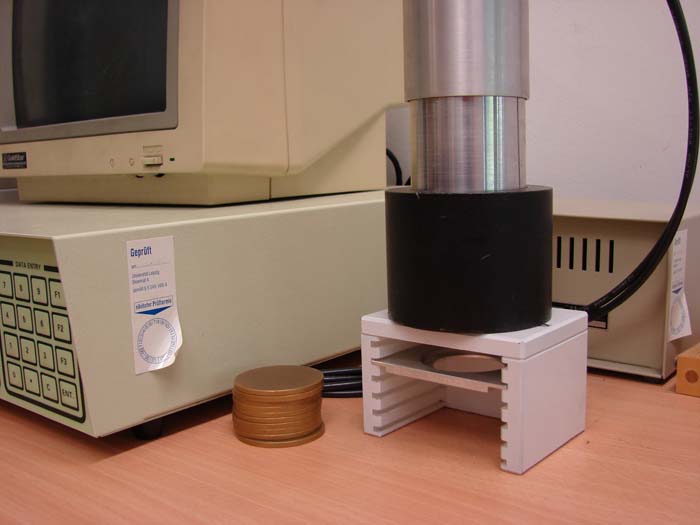ISO 18589-1 Alpha and Beta Activity Testing in Soils
The ISO 18589 series of standards provides a framework for determining the alpha and beta activity levels in various types of soil. This service specifically focuses on ISO 18589-1: Soil—Determination of alpha and beta activities by alpha/beta spectrometry. The standard is widely used in environmental monitoring, waste management, and nuclear safety to ensure compliance with regulatory requirements.
The testing process involves the analysis of soil samples using a combination of alpha/beta spectrometry techniques. This method allows for precise measurement of both alpha and beta particle emissions from radioactive isotopes present in the soil. The primary goal is to quantify these activities accurately, ensuring that they are within acceptable limits set by regulatory bodies.
The first step in this process involves thorough sample preparation. Soil samples must be collected from representative locations and then dried before being homogenized for consistent testing. Afterward, appropriate amounts of the soil are placed into containers suitable for radiation shielding during measurement. This careful preparation ensures accurate results that reflect actual conditions on-site.
Once prepared, the samples undergo analysis using a specialized spectrometer capable of detecting alpha and beta particles. The instrument measures particle energies and counts them to calculate activity levels. For accurate readings, it’s crucial to calibrate the equipment regularly against known standards.
The results generated by this process are reported according to ISO 18589-1 guidelines. These reports typically include detailed descriptions of the sample preparation procedures followed, a summary of measurement parameters used during testing, and the calculated alpha and beta activities along with their uncertainties. Compliance with local regulations may also require additional reporting elements.
Our laboratory uses state-of-the-art equipment compliant with ISO standards to ensure reliable results every time. Our team of experienced professionals guarantees that all tests are conducted according to best practices outlined in these internationally recognized guidelines. We offer comprehensive support throughout the entire testing process, from initial consultation through final report delivery.
| Parameter | Description | Unit |
|---|---|---|
| Alpha Activity | Total alpha particle emissions from radioactive isotopes. | Bq/kg |
| Beta Activity | Total beta particle emissions from radioactive isotopes. | Bq/kg |
- Alpha particles are high-energy, short-range radiation emitted by heavy nuclei like Uranium-238 and Thorium-232.
- Beta particles consist of fast-moving electrons or positrons produced when a neutron transforms into a proton inside an atomic nucleus.
This testing is essential for various sectors including environmental protection, waste management facilities, and nuclear power plants. By adhering to ISO 18589-1 standards, we provide reliable data that helps ensure safety and compliance with international regulations.
Scope and Methodology
The scope of this testing encompasses the determination of alpha and beta activities in soil samples according to ISO 18589-1. This includes quantifying both types of radiation emissions present within the specified materials using spectrometric methods.
The methodology involves several key steps:
- Sampling: Collect representative soil samples from designated areas.
- Preparation: Dry and homogenize the collected samples for uniform testing conditions.
- Analysis: Use a spectrometer to measure alpha and beta particle emissions.
- Reporting: Provide detailed reports including all relevant data points and uncertainties.
Our laboratory adheres strictly to these procedures, ensuring accurate and reliable results. We employ advanced techniques that meet or exceed ISO standards for precision and accuracy.
Environmental and Sustainability Contributions
- Reduces risks associated with radioactive contamination by identifying and quantifying alpha and beta activities in soil samples.
- Aids in compliance with environmental regulations, thereby protecting ecosystems from potential harm caused by hazardous materials.
- Supports sustainable practices by providing information necessary for managing waste effectively without causing adverse effects on the environment.
The ability to accurately measure these activities plays a critical role in maintaining ecological balance and promoting long-term sustainability. Our testing contributes significantly towards minimizing environmental impacts while enhancing overall safety standards.
Use Cases and Application Examples
- Environmental monitoring programs to assess the impact of industrial activities on soil quality.
- Radiation surveys conducted before initiating construction projects near contaminated sites.
- Waste management operations where accurate quantification is required for proper disposal or treatment processes.
| Situation | Purpose of Testing |
|---|---|
| Post-accident investigations following nuclear incidents | Evaluate immediate and long-term effects on surrounding areas. |
| Regulatory inspections of landfills and incineration facilities | Ensure compliance with established limits for radioactive waste materials. |
In each case, the accurate measurement of alpha and beta activities helps stakeholders make informed decisions regarding resource management and public health protection.





